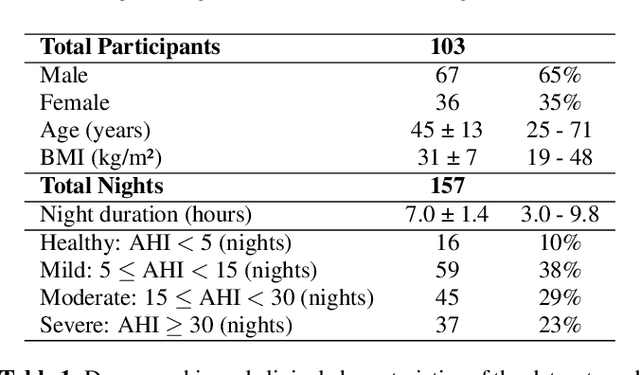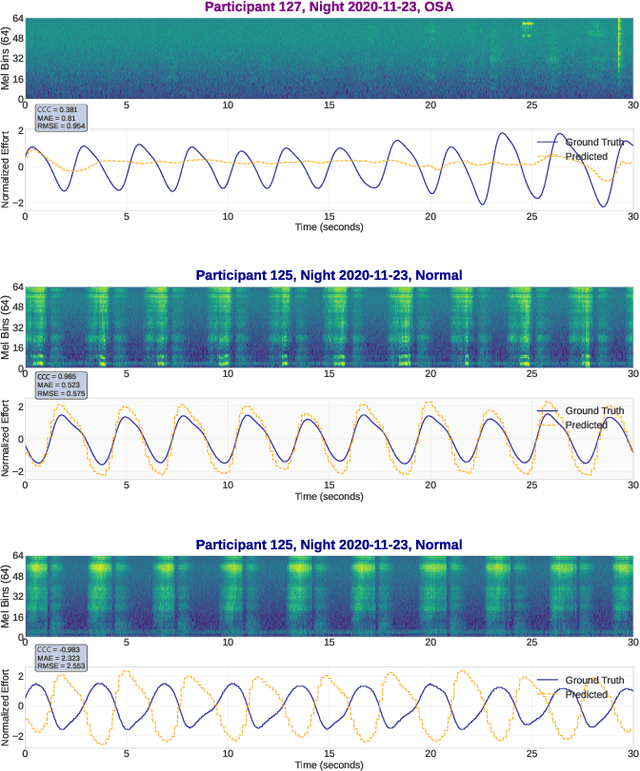Guy J. Brown
Estimating Respiratory Effort from Nocturnal Breathing Sounds for Obstructive Sleep Apnoea Screening
Sep 18, 2025



Abstract:Obstructive sleep apnoea (OSA) is a prevalent condition with significant health consequences, yet many patients remain undiagnosed due to the complexity and cost of over-night polysomnography. Acoustic-based screening provides a scalable alternative, yet performance is limited by environmental noise and the lack of physiological context. Respiratory effort is a key signal used in clinical scoring of OSA events, but current approaches require additional contact sensors that reduce scalability and patient comfort. This paper presents the first study to estimate respiratory effort directly from nocturnal audio, enabling physiological context to be recovered from sound alone. We propose a latent-space fusion framework that integrates the estimated effort embeddings with acoustic features for OSA detection. Using a dataset of 157 nights from 103 participants recorded in home environments, our respiratory effort estimator achieves a concordance correlation coefficient of 0.48, capturing meaningful respiratory dynamics. Fusing effort and audio improves sensitivity and AUC over audio-only baselines, especially at low apnoea-hypopnoea index thresholds. The proposed approach requires only smartphone audio at test time, which enables sensor-free, scalable, and longitudinal OSA monitoring.
Transfer Learning for Paediatric Sleep Apnoea Detection Using Physiology-Guided Acoustic Models
Sep 18, 2025Abstract:Paediatric obstructive sleep apnoea (OSA) is clinically significant yet difficult to diagnose, as children poorly tolerate sensor-based polysomnography. Acoustic monitoring provides a non-invasive alternative for home-based OSA screening, but limited paediatric data hinders the development of robust deep learning approaches. This paper proposes a transfer learning framework that adapts acoustic models pretrained on adult sleep data to paediatric OSA detection, incorporating SpO2-based desaturation patterns to enhance model training. Using a large adult sleep dataset (157 nights) and a smaller paediatric dataset (15 nights), we systematically evaluate (i) single- versus multi-task learning, (ii) encoder freezing versus full fine-tuning, and (iii) the impact of delaying SpO2 labels to better align them with the acoustics and capture physiologically meaningful features. Results show that fine-tuning with SpO2 integration consistently improves paediatric OSA detection compared with baseline models without adaptation. These findings demonstrate the feasibility of transfer learning for home-based OSA screening in children and offer its potential clinical value for early diagnosis.
 Add to Chrome
Add to Chrome Add to Firefox
Add to Firefox Add to Edge
Add to Edge